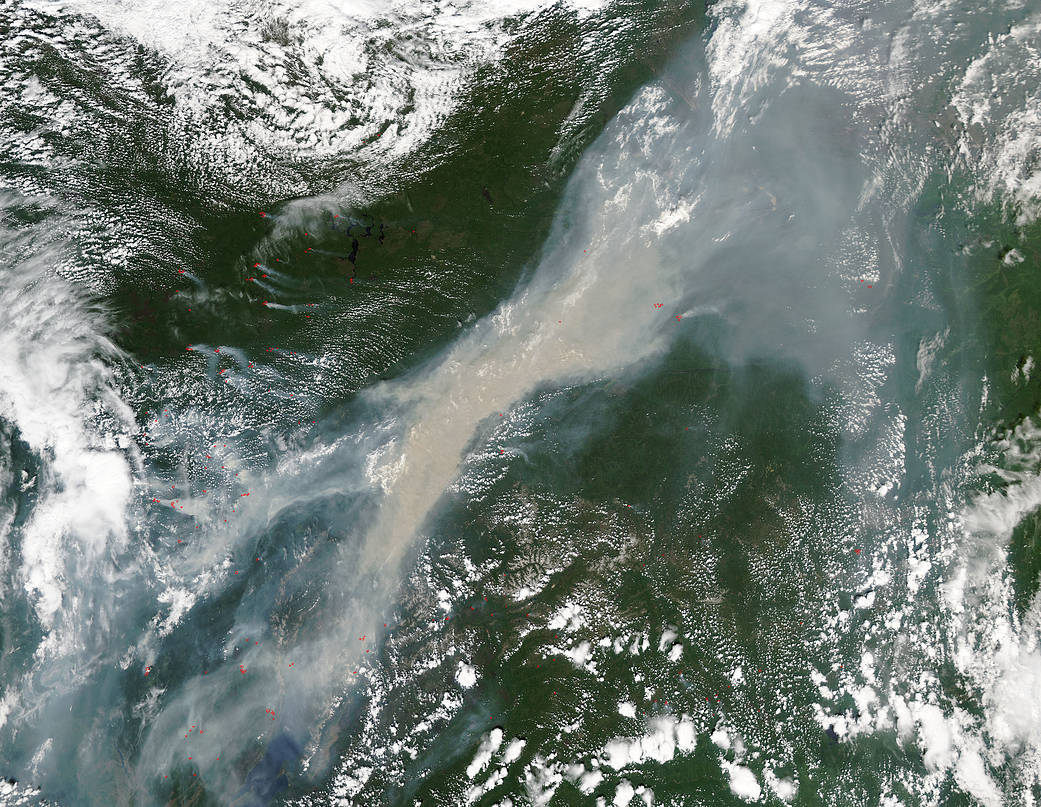NASA’s Aqua satellite collected this natural-color image of smoke and fires in central Russia with the Moderate Resolution Imaging Spectroradiometer, MODIS, instrument on June 23, 2017. Actively burning areas, detected by MODIS’s thermal bands, are outlined in red.
Each hot spot, which appears as a red mark, is an area where the thermal detectors on the MODIS instrument recognized temperatures higher than background. When accompanied by plumes of smoke, as in this image, such hot spots are diagnostic for fire. The Russian Aerial Forest Protection Service reported that over the past three days from 19 to 21 June in the Irkutsk region (the area in the image) “there has been an active increase in air temperature and fire hazard classes in forests according to weather conditions. As for the situation on June 22, an extreme level of fire hazard is noted in most of the region, the air temperature exceeds + 30 ° С + 35 ° С (86 – 95 F). According to the information of the regional dispatching service of forestry, from June 19 till June 21 in the Irkutsk region there were 81 forest fires as a result of thunderstorm activity with 77 fires [of] 81 occurred in hard-to-reach areas of the zone of forestry works. Over the past three days in the Irkutsk region, 43 forest fires on a total area of about 15 thousand hectares (37,065 acres) have been liquidated by forest fire services and involved individuals, 50 forest fires have been localized (limited to the spread of fire) on a total area of about 19,000 hectares (46,950 acres).”
From those fires copious amounts of smoke drift across the landscape and almost completely obscure Lake Baikal which can be seen in the bottom left of the image. This time of year Lake Baikal becomes a popular tourist destination for locals. It is located in a remote portion of Siberia but there are those that still will venture to the lake for summertime activities. Smoke could certainly prohibit outdoor activities due to the high levels of smoke. The smoke released by any type of fire (forest, brush, crop, structure, tires, waste or wood burning) is a mixture of particles and chemicals produced by incomplete burning of carbon-containing materials. All smoke contains carbon monoxide, carbon dioxide and particulate matter or soot and is hazardous to breathe. So, too, naturally burning fires (as opposed to prescribed fires) release dangerous particles into the air at a rate three times as high as levels previously recorded by the EPA, researchers at Georgia Tech recently found.
NASA image courtesy Jeff Schmaltz LANCE/EOSDIS MODIS Rapid Response Team, GSFC. Caption by Lynn Jenner with information from the Russian Aerial Forest Protection Service.



























